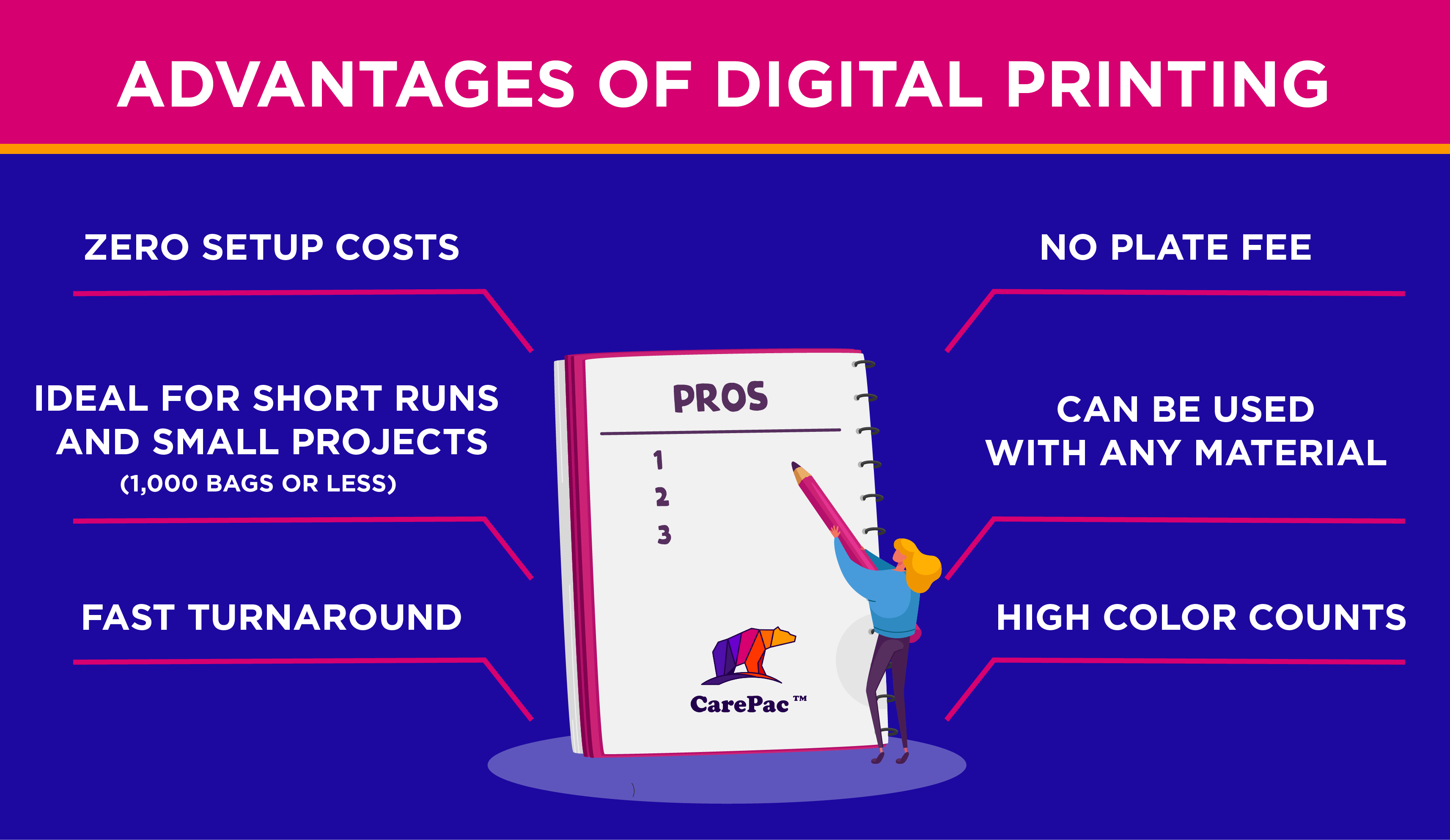Getting The Digital Printing To Work
Getting The Digital Printing To Work
Blog Article
Everything about Digital Printing
Table of ContentsLittle Known Questions About Digital Printing.Rumored Buzz on Digital PrintingDigital Printing Can Be Fun For AnyoneGetting My Digital Printing To WorkAll About Digital PrintingThe Only Guide to Digital Printing
Variable information printing, such as straight mail with personalized codes and addresses, is ideally fit for digital printing. Digital fast printing only requires four steps of layout, review, printing and binding to get whatever done. Digital fast printing has an unmatched advantage: print on demand.According to PMMI, electronic printing allows brand names and producers to react promptly to customer needs while boosting the supply chain, minimizing warehousing price and waste, and enjoying faster time to market. That all sounds great, however how does this technology do all that? The major differentiator of these innovations is that there are no set-up costs and no plates with digital printing.
Some Known Details About Digital Printing
According to Wikipedia, the greatest difference in between digital printing and conventional methods such as lithography, flexography, gravure, or letterpress - Digital Printing is that there is no demand to change printing plates in electronic printing, whereas in these analog printing techniques home plates are repeatedly changed. This results in quicker turn-around time and lowers expense when using electronic printing.
Digital printing is highly flexible, so it's easy to make changes to the plan style rapidly. It all goes back to the plates.
With conventional printing techniques, short-run printing is simply not possible. Due to the fact that an excellent design can make or break your item, digital printing constantly develops high-grade, clear and vivid graphics each time.
Digital printing is the procedure of printing digital-based pictures straight onto a selection of media substratums. There is no demand for a printing plate, unlike with offset printing. Digital data such as PDFs or desktop computer publishing data can be sent out directly to the electronic printing press to print on paper, photo paper, canvas, material, synthetics, cardstock and other substrates.
Getting The Digital Printing To Work
According to PMMI, digital printing permits brand names and manufacturers to react rapidly to customer demands while enhancing the supply chain, minimizing warehousing price and waste, and enjoying faster time to market. That all noises wonderful, yet just how does this modern technology do all that? The significant differentiator of these technologies is that there are no set up charges and no plates with electronic printing.
According to Wikipedia, the biggest difference in between electronic printing and standard methods such as lithography, flexography, gravure, or letterpress is that there is no need to replace printing plates in digital printing, whereas in these analog printing approaches home plates are consistently changed. This leads to quicker turn-around time and decreases price when utilizing digital printing.

The Only Guide for Digital Printing
More inventory can mean more waste down the roadway. With conventional printing approaches, short-run printing is just not possible. Because an excellent design can make or break your product, digital printing blog continually creates top notch, clear and vivid graphics each time. Digital printing on versatile bags includes the brilliant, vivid, and specific graphics that practically beckon customers to get to out and touch them.

According to PMMI, digital printing permits brands and manufacturers to respond promptly to client demands while enhancing the supply chain, decreasing warehousing expense and waste, and enjoying visite site faster time to market. check it out That all noises excellent, but exactly how does this modern technology do all that? The significant differentiator of these modern technologies is that there are no set-up costs and no plates with digital printing.
All About Digital Printing
This results in quicker turn-around time and decreases expense when making use of digital printing.
Speedy production indicates obtaining your product to market quicker. It additionally indicates it's much easier and faster to make modifications later on, when you alter a recipe, include a SKU, or create seasonal packaging. Digital printing is highly versatile, so it's easy to make modifications to the package style swiftly. It all returns to home plates.

See This Report about Digital Printing
Digital printing is the procedure of printing digital-based pictures straight onto a variety of media substratums. There is no requirement for a printing plate, unlike with offset printing. Digital data such as PDFs or desktop posting files can be sent directly to the digital printing machine to publish on paper, photo paper, canvas, material, synthetics, cardstock and other substratums.
Report this page